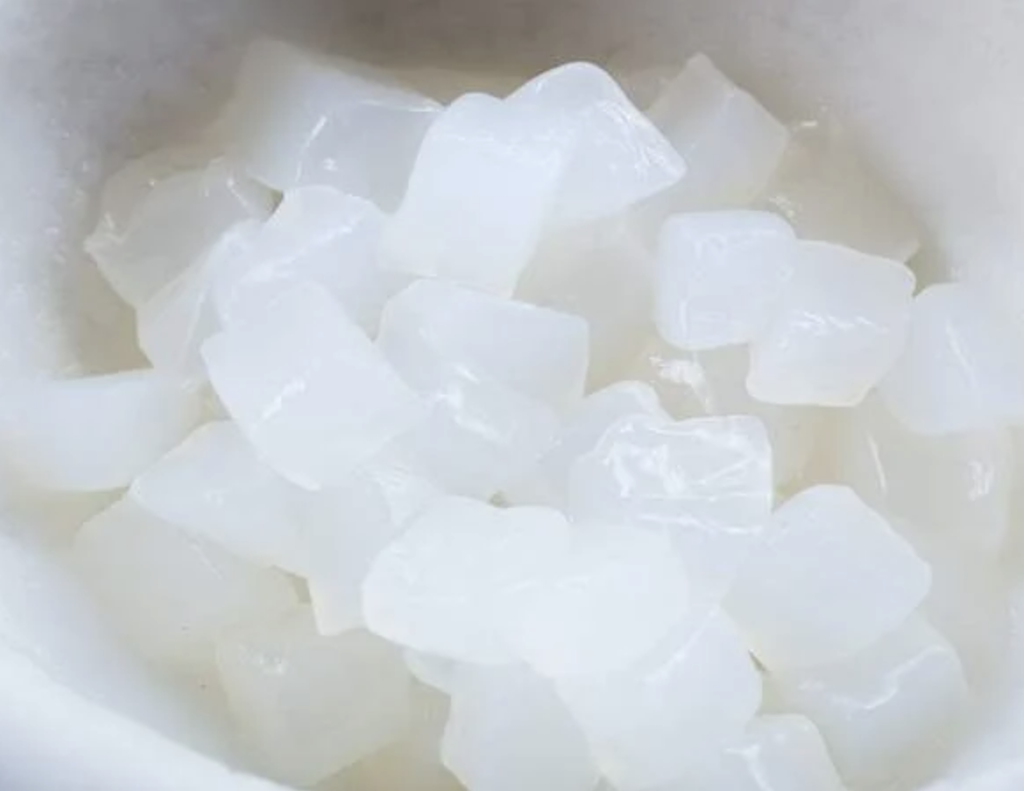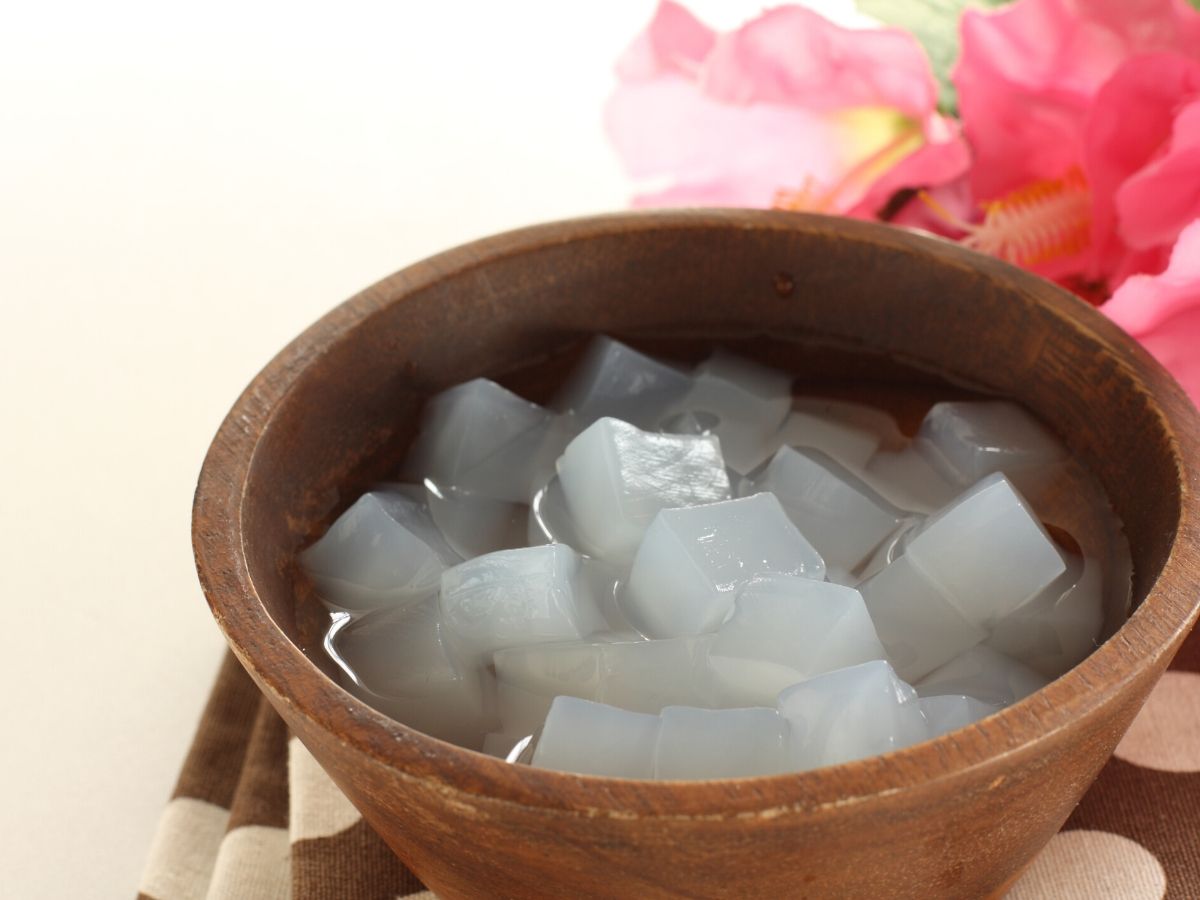Nata de coco, a popular Philippine delicacy, is made from fermented coconut water. This delicious and nutritious treat is not only tasty but also provides numerous benefits to our health, skin, and hair. In this article, we will explore the amazing benefits of nata de coco and how it can help improve our overall well-being.
Who can benefit from Nata de Coco?

Nata de coco is a versatile food that can benefit almost anyone. However, it is particularly helpful for individuals who are looking for a healthy snack or want to improve their skin and hair health. Nata de coco is also beneficial for people who are on a low-calorie diet, as it is low in calories and can help satisfy cravings.
Summary:
- Anyone can benefit from nata de coco
- Particularly helpful for those looking for a healthy snack, improving skin and hair health, and low-calorie diet.
What is Nata de Coco?

Nata de coco is a jelly-like substance that is produced by the fermentation of coconut water. The fermentation process is carried out by a specific type of bacteria known as Acetobacter xylinum. The bacteria consume the sugar and nutrients in the coconut water and produce a gel-like substance.
Nata de coco is a good source of fiber, vitamins, and minerals. It is also low in calories and fat, making it an excellent choice for people who are watching their weight.
Summary:
- Nata de coco is a jelly-like substance produced by fermenting coconut water
- A good source of fiber, vitamins, and minerals
- Low in calories and fat
When to consume Nata de Coco?
Nata de coco can be consumed at any time of the day as a healthy snack. It is also a great addition to smoothies and desserts. Nata de coco can be eaten plain or mixed with other fruits to create a delicious and nutritious snack.
Summary:
- Nata de coco can be consumed at any time of the day
- Great addition to smoothies and desserts
- Can be eaten plain or mixed with other fruits
How to consume Nata de Coco for Health?
Nata de coco can be consumed in various ways to reap its health benefits. Here are some ways to enjoy nata de coco for health:
- Eat it plain – Nata de coco can be eaten plain as a snack to satisfy hunger pangs between meals.
- Add it to salads – Nata de coco can be used as an ingredient in salads to add texture and flavor.
- Mix it with yogurt – Nata de coco can be mixed with yogurt to create a healthy and delicious snack.
- Make a smoothie – Nata de coco can be blended with other fruits to create a nutritious smoothie.
Summary:
- Eat it plain, add it to salads, mix it with yogurt or make a smoothie
- Nata de coco can be consumed in various ways to reap its health benefits
Pros and Cons of Consuming Nata de Coco
Like any food, nata de coco has its pros and cons. Here are some of the benefits and drawbacks of consuming nata de coco:
Pros:
- Low in calories and fat
- Rich in fiber, vitamins, and minerals
- May help improve digestion
- Can help lower cholesterol levels
Cons:
- May contain added sugars and preservatives
- Some people may be allergic to coconut
- May cause digestive issues in some people
Summary:
- Pros: Low in calories and fat, rich in fiber, vitamins, and minerals, may help improve digestion, can help lower cholesterol levels
- Cons: May contain added sugars and preservatives, some people may be allergic to coconut, may cause digestive issues in some people
Alternatives to Nata de Coco
If you are unable to consume nata de coco or would like to try other healthy snacks, here are some alternatives:
- Chia seeds – Chia seeds are high in fiber, protein, and omega-3 fatty acids, and can be added to smoothies, yogurt, or cereal.
- Edamame – Edamame is a good source of protein and fiber, and is a great snack for people who are watching their weight.
- Hummus – Hummus is a flavorful dip made from chickpeas, tahini, olive oil, and spices. It is high in fiber and protein and can be enjoyed with vegetables or crackers.
Summary:
- Alternatives to nata de coco: chia seeds, edamame, and hummus
- Chia seeds are high in fiber, protein, and omega-3 fatty acids
- Edamame is a good source of protein and fiber
- Hummus is high in fiber and protein and can be enjoyed with vegetables or crackers
Step-by-Step Guide to Making Nata de Coco

If you would like to make your own nata de cocoat home, here is a step-by-step guide:
- Sterilize a glass jar and its lid by boiling them for 10 minutes. Let them cool to room temperature.
- In a clean bowl, combine 1 cup of coconut water, 1 tablespoon of white vinegar, and 1 tablespoon of sugar. Stir until the sugar dissolves.
- Pour the mixture into the sterilized glass jar and cover it with the lid.
- Place the jar in a warm and dark place for 7-14 days. The ideal temperature is around 86°F (30°C).
- Check the jar every few days to monitor the progress of the fermentation. The nata de coco should form a jelly-like substance on the surface of the liquid.
- Once the nata de coco has reached the desired thickness, remove it from the jar and rinse it with water. It is now ready to be consumed or used in recipes.
Summary:
- Sterilize a glass jar and its lid
- Combine coconut water, vinegar, and sugar in a bowl
- Pour the mixture into the jar and cover it
- Place the jar in a warm and dark place for 7-14 days
- Check the jar every few days to monitor the progress of the fermentation
- Once the nata de coco has formed, remove it from the jar and rinse it with water
Comparing Nata de Coco with Other Jellies
Nata de coco is not the only jelly-like substance that is consumed worldwide. Here’s how it compares to other popular jellies:
- Gelatin – Gelatin is a protein-based jelly that is made from the collagen of animal bones and skin. It is commonly used in desserts, such as Jell-O.
- Nata de coco is a plant-based jelly that is made from coconut water. It is lower in calories and fat than gelatin.
- Agar-agar – Agar-agar is a jelly-like substance that is made from seaweed. It is commonly used in Asian desserts and is popular among vegans and vegetarians.
- Nata de coco is similar to agar-agar in texture but has a different flavor.
Summary:
- Nata de coco is a plant-based jelly made from coconut water
- Lower in calories and fat than gelatin
- Similar to agar-agar in texture, but has a different flavor
Tips for Using Nata de Coco in Skin and Hair Care
Nata de coco is not only good for our health but can also benefit our skin and hair. Here are some tips for using nata de coco in your beauty routine:
- Nourishing face mask – Mix nata de coco with honey and apply it to your face for 20 minutes. Rinse it off with warm water to reveal hydrated and glowing skin.
- Scalp exfoliator – Mix nata de coco with coconut oil and gently massage it into your scalp to remove buildup and improve circulation.
- Hair conditioner – Mix nata de coco with aloe vera gel and apply it to your hair for 10-15 minutes. Rinse it off with cold water to reveal soft and shiny hair.
Summary:
- Nata de coco can benefit our skin and hair
- Tips: nourishing face mask, scalp exfoliator, hair conditioner
FAQs
- Is nata de coco safe for people with nut allergies?
- Nata de coco is made from coconut, which is not a nut but a fruit. However, some people with coconut allergies may also be allergic to nata de coco.
- Can nata de coco help with weight loss?
- Nata de coco is low in calories and fat, making it a good snack for people who are watching their weight. However, it should be consumed in moderation as it may contain added sugars and preservatives.
- How long does nata de coco last?
- Nata de coco can last for up to two weeks in the refrigerator if stored in an airtight container.
- Can nata de coco be used in cooking?
- Yes, nata de coco can be used in a variety of recipes, such as salads, smoothies, and desserts.
- Is nata de coco vegan?
- Nata de coco is a plant-based jelly and is suitable for vegans and vegetarians.
Conclusion
Nata de coco is a nutritious and delicious food that provides numerous health benefits. It is low in calories and fat, rich in fiber, vitamins, and minerals, and can help improve digestion and lower cholesterol levels. Nata de coco can also benefit our skin and hair when used in beauty routines. While it may have some drawbacks, such as the possibility of containing added sugars and preservatives, it is generally a healthy food that can be enjoyed by almost anyone.


 Juice Concentrate
Juice Concentrate Vegetable juice
Vegetable juice Juice Milk
Juice Milk Stand Up Pouches
Stand Up Pouches









